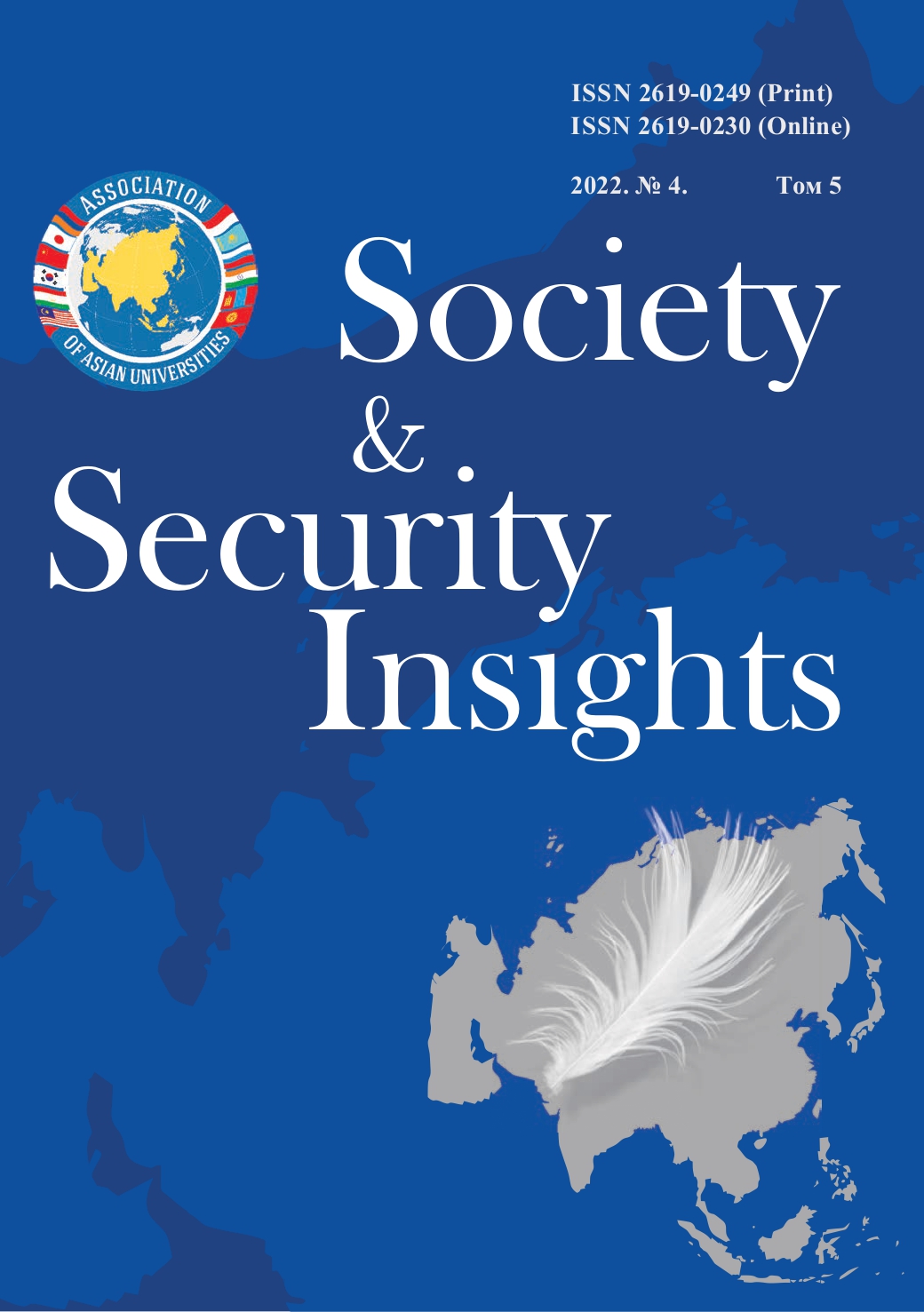AGRI-FOOD STRATEGY: THE EXPERIENCE OF DEVELOPED COUNTRIES OF THE WORLD
Main Article Content
Abstract
One of the main elements of national security is food security. The aggravation of geopolitical challenges has an impact on the state of food security, which, meanwhile, depends on the historical, political, environmental and economic prerequisites inherent in each country. Therefore, it is necessary to balance the management decisions of the state in the field of internal socio-economic processes with foreign policy decisions. It is necessary to clearly define the strategic priorities of socio-economic policy in the direction of ensuring food security. This article summarizes successful mechanisms and methods of state regulation and support of the agro-food sector based on the study of the experience of developed countries of the world. Priority directions of Russia's agri-food strategy for the near future are proposed.
Downloads
Metrics
Article Details

This work is licensed under a Creative Commons Attribution 4.0 International License.
Authors retain the copyright of their manuscripts, and all Open Access articles are distributed under the terms of the Creative Commons Attribution License, which permits unrestricted use, distribution, and reproduction in any medium, provided that the original work is properly cited.
References
Белякова Г.Я., Озерова М.Г., Гаврилова О.Ю. Функционирование и устойчивое развитие молочного скотоводства в зарубежных странах // Социально-экономический и гуманитарный журнал. 2019. № 1 (11). С. 12–24.
Гусева Е.С. Возможные пути использования опыта КНР в обеспечении продовольственной безопасности России // Хлебопродукты. 2017. № 5. С. 56-59.
Колесняк И.А., Колесняк А.А. Система продовольственного обеспечения региона: проблемы и перспективы её развития. Краснояр. гос.ун-т. Красноярск, 2014. 234 с.
Колесняк А.А., Полянская Н.М. Оценка продовольственной самообеспеченности в странах мира // Социально-экономический и гуманитарный журнал. 2022. № 2 (24). С. 132–144.
Население Китая: численность, национальный состав. URL: http://www.statdata.ru/naselenie-kitaya-chislennost (дата обращения: 02.11.2022).
Овчинников О.Г. Эволюция мер аграрной политики США в начале XXI века // США и Канада: экономика, политика, культура. 2018. № 3 (579). С. 5-20.
Россия и страны мира. 2020: Стат. сб. Росстат. M., 2020. 385 c.
Самыгин Д.Ю. Стратегия бюджетного обеспечения сельского хозяйства: продовольственный аспект // Модели, системы, сети в экономике, технике, природе и обществе. 2020. № 3 (35). С. 63-75.
Султанова Г.Т. Государственная поддержка АПК в зарубежных странах // Проблемы агрорынка. 2017. № 3. С. 131-135.
Тяньмин Г., Ерохин В.Л., Иволга А.Г. Политика Китая в сфере обеспечения продовольственной безопасности: современные вызовы // Вестник АПК Ставрополья. 2018. № 1 (29). С. 111-116.
Электронный бюджет. Официальный портал. URL: http://budget.gov.ru
Song J. Financial monetary mechanisms and the role of banking margin in China’s economic reform // The Far Eastern Affairs. 2016. №2.
REFERENCES
Aganbegyan, A.G. (2021). How to restore the safety of the people of Russia. Population, 24(2), 4–18. (In Russ.).
Belyakova, G.Ya., Ozerova, M.G., Gavrilova, O.Yu. (2019). Functioning and sustainable development of dairy cattle breeding in foreign countries. Socio-economic and Humanitarian Journal, 1 (11), 12–24. (In Russ.).
Guseva, E.S. (2017). Possible ways of using the experience of the People's Republic of China in ensuring food security of Russia. Bread products, 5, 56–59. (In Russ.).
Kolesnyak, I.A., Kolesnyak, A.A. (2014). The food supply system of the region: problems and prospects of its development. Krasnoyarsk, KrasGAU (In Russ.).
Kolesnyak, A.A., Polyanskaya, N.M. (2022). Assessment of food self-sufficiency in the countries of the world. Socio-economic and Humanitarian Journal, 2(24), 132–144. (In Russ.).
The population of China: number, national composition. http://www.statdata.ru/naselenie-kitaya-chislennost (In Russ.).
Ovchinnikov, O. G. (2018). Evolution of US agrarian policy measures at the beginning of the XXI century. USA and Canada: economics, politics, culture, 3(579), 5–20 (In Russ.).
Russia and the countries of the world (2020). Rosstat. (In Russ.).
Samygin, D.Y. (2020). Strategy of budget support of agriculture: food aspect. Models, systems, networks in economics, technology, nature and society, 3(35), 63–75 (In Russ.).
Sultanova, G.T. (2017). State support of agriculture in foreign countries. Problems of the agro-market, 3, 131–135. (In Russ.).
Tianmin, G., Erokhin, V.L., Ivolga, A.G. (2018). China's policy in the field of food security: Modern challenges. Bulletin of the Agroindustrial complex of Stavropol, 1(29), 111–116. (In Russ.).
Electronic budget. The official portal. http://budget.gov.ru (In Russ.).
Song, J. (2016). Financial monetary mechanisms and the role of banking margin in China’s economic reform. The Far Eastern Affairs, 2.


 https://orcid.org/0000-0002-6387-6494
https://orcid.org/0000-0002-6387-6494